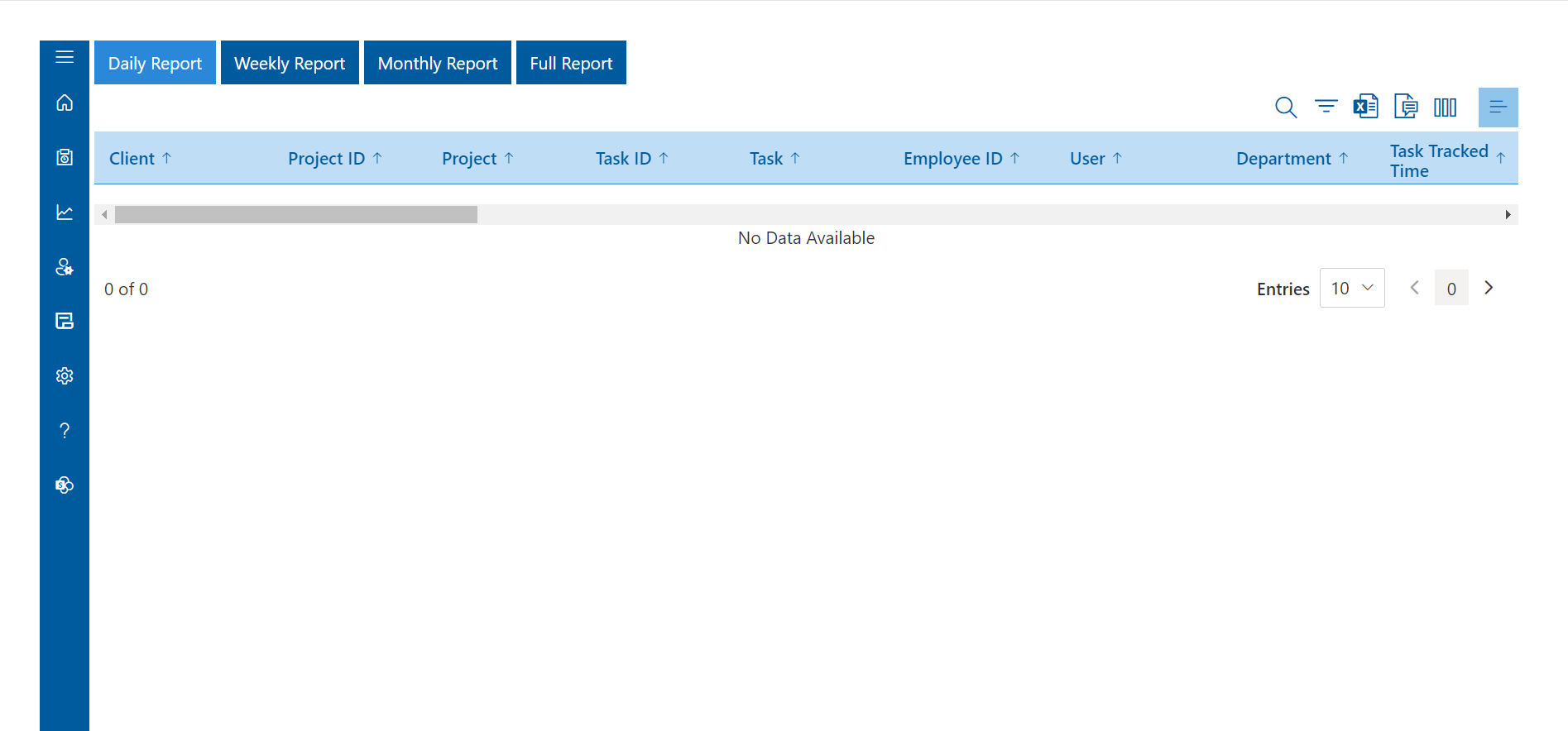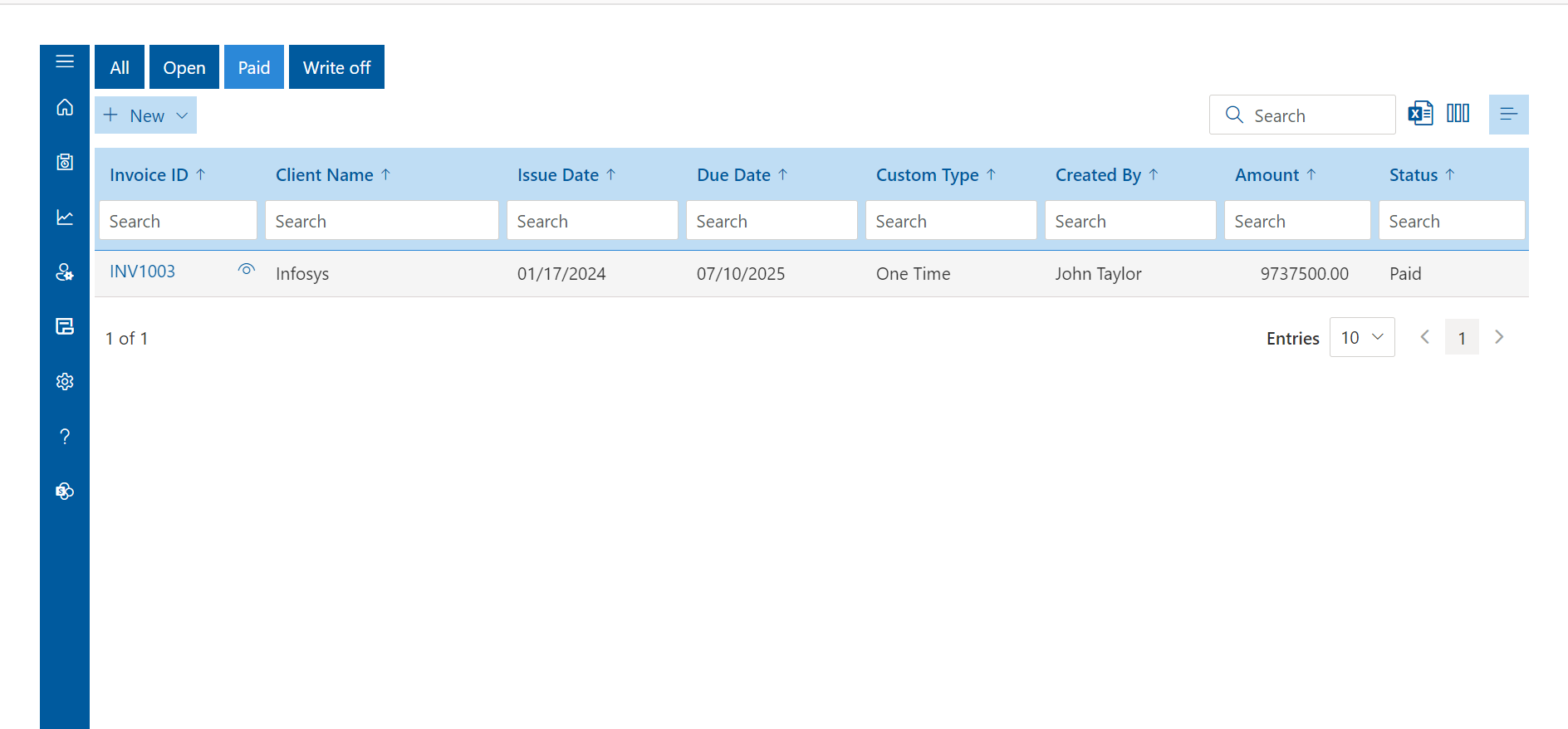Timesheet System
Timesheet systems can assist in managing tasks and time efficiently, offering precise digital solutions. Let’s delve deeper into this topic:
Introduction to Timesheet System
A timesheet system is a tool used by organizations to track and record the amount of time employees spend on various tasks, projects, or activities. It is an essential component of workforce management, providing valuable data for payroll, billing clients, project management, and analysis of productivity and resource allocation.
The primary purpose of a timesheet system is to accurately capture and document the hours worked by employees. This includes regular work hours, overtime, vacation time, sick leave, and other types of absences. By recording this information in a systematic and organized manner, businesses can ensure compliance with labor laws and regulations, as well as facilitate fair and accurate compensation for employees.
Importance of Timesheet System
A timesheet system is crucial for various reasons, especially in professional settings where time management and accountability are essential. Here are some of the key reasons why timesheet systems are important:
1)Time Tracking: Timesheet software allow employees to accurately track the time spent on different tasks and projects. This tracking provides valuable insights into how time is allocated and helps in better resource management.
2)Project Management: Timesheets provide project managers with real-time data on the progress of tasks and projects. This information helps in identifying potential bottlenecks, allocating resources efficiently, and ensuring that projects are completed within deadlines.
3)Billing and Invoicing: For service-based businesses, accurate time tracking is essential for billing clients. Timesheets provide detailed records of billable hours, which can be used to generate accurate invoices, thereby ensuring that businesses are properly compensated for the work done.
4)Resource Allocation: Timesheet data helps organizations understand how their resources are being utilized. This information can be used to identify overworked or underutilized employees, adjust workloads, and optimize resource allocation for maximum efficiency.
5)Performance Evaluation: Timesheets can be used as a basis for performance evaluations and employee reviews. Managers can assess individual performance based on factors such as productivity, time management, and adherence to deadlines, as reflected in timesheet data.
6)Compliance and Legal Requirements: In certain industries or jurisdictions, maintaining accurate records of employee work hours is a legal requirement. Timesheets help organizations comply with labor laws and regulations related to overtime, minimum wage, and working hours.
7)Cost Analysis: Timesheet data can be used for cost analysis purposes, allowing organizations to evaluate the profitability of projects and clients. By comparing actual hours worked against budgeted hours, businesses can identify areas where costs can be reduced, or efficiencies improved.
8)Transparency and Accountability: Implementing a timesheet software fosters transparency and accountability within the organization. Employees are aware that their time is being tracked, which can encourage them to stay focused and productive. It also provides a clear record of work activities, reducing the likelihood of disputes or misunderstandings.
Features of Timesheet System
A online timesheet system is a tool used by organizations to track and manage the time worked by employees on various tasks or projects. Here are some common features of a timesheet system:
Time Tracking: Allows employees to record the time they spend on different activities, projects, or clients. This can be done through manual entry, clocking in and out, or automatic tracking.
Project and Task Allocation:
Project and task allocation systems are essential tools for managers to efficiently distribute work among their team members. By assigning specific projects or tasks to employees through these systems, managers can ensure that workloads are balanced and aligned with individual skills and capacities. Moreover, these systems enable managers to track the progress of each task or project against allocated timeframes, allowing for better monitoring and adjustment of deadlines as needed.
This facilitates effective time management and helps prevent bottlenecks or delays in project delivery. Additionally, such systems often provide visibility into resource utilization, enabling managers to optimize team productivity and allocate resources more effectively.

Attendance Management:
Attendance management systems are designed to meticulously track employee attendance, capturing data on late arrivals, early departures, and absences. By systematically recording these instances, managers gain insights into individual and overall attendance patterns, facilitating the enforcement of company attendance policies. These systems provide a centralized platform for monitoring attendance-related data, streamlining administrative tasks associated with managing workforce attendance. Additionally, they enable managers to identify trends or recurring issues, allowing for proactive measures to address attendance challenges.
With real-time visibility into employee attendance, organizations can uphold accountability, ensure compliance with attendance regulations, and foster a culture of punctuality and reliability among employees.

Approval Workflow:
The Approval Workflow system streamlines the process of timesheet management by offering a structured approach to submission, review, and approval. Employees can conveniently submit their timesheets through the platform, ensuring accurate and timely recording of their work hours. Supervisors and managers are then notified to review the submitted timesheets, ensuring accountability and compliance with company policies.
This system enhances transparency and efficiency by providing a clear pathway for the approval process, reducing the likelihood of errors or delays. Additionally, it fosters communication between employees and their supervisors, facilitating any necessary adjustments or clarifications before final approval.

Reporting and Analytics:
The Reporting and Analytics feature offers comprehensive insights into employee time data, encompassing various metrics such as hours worked, overtime, billable hours, project costs, and productivity indicators. By leveraging this functionality, organizations gain valuable visibility into their workforce dynamics, enabling informed decision-making and strategic resource allocation. These reports provide a detailed overview of employee activities, facilitating performance evaluation and identifying areas for improvement.
With access to such data-driven insights, businesses can optimize their operations, allocate resources efficiently, and enhance overall productivity.

Integration with Payroll Systems:
Integration with payroll systems is a crucial aspect for businesses aiming to streamline their operations. By seamlessly connecting with payroll software, this integration simplifies the complex task of calculating employee wages. It efficiently incorporates recorded time data, ensuring accurate compensation for hours worked, including overtime and leave balances. This automation eliminates manual errors and reduces the administrative burden on HR departments.
Additionally, it enhances compliance with labour regulations by consistently applying relevant rules and policies.

Customization:
This system provides extensive customization options tailored to meet the unique requirements and workflows of any organization regarding timesheet management.
With this platform, administrators can easily modify timesheet templates, adjust fields, and refine approval processes to precisely align with the organization’s operational needs. This flexibility ensures seamless integration with existing workflows, enabling efficient tracking of time and resources. Whether it’s adding specific fields to capture essential data or streamlining approval chains, our customization features empower organizations to adapt and optimize their timesheet processes effortlessly.

Mobile Accessibility:
The system prioritizes mobile accessibility, empowering employees to conveniently submit timesheets and enabling managers to efficiently approve them while on the move. With seamless integration into smartphones and tablets, platform ensures that crucial tasks related to time management can be effortlessly completed from anywhere. Whether in transit, during business trips, or even during off-site meetings, users can rely on the flexibility of our mobile interface to stay connected and productive.
Compliance and Regulations:
This system ensure compliance with labour laws, union agreements, and industry regulations pertaining to time tracking and employee compensation. By meticulously adhering to these standards, we safeguard against potential legal ramifications and maintain ethical business practices.
It also shows commitment to compliance fosters a fair and transparent work environment, promoting employee satisfaction and trust. Through regular audits and reviews, we stay updated on evolving regulations, implementing necessary adjustments to our policies and procedures.
Challenges in Timesheet Software
Timesheet software while integral to tracking employee hours and managing payroll, can encounter several challenges. Here are some common ones:
1)Accuracy: Ensuring that employees accurately record their time can be a challenge. Mistakes or inaccuracies can lead to discrepancies in payroll, project budgets, and client billing.
2)Manual Entry Errors: If the timesheet system relies on manual entry, there’s a higher chance of errors due to typos, incorrect entries, or forgetting to log hours.
3)Time Tracking Compliance: Compliance with labor laws and regulations regarding overtime, breaks, and other time-related matters can be complex. Ensuring that the timesheet system accommodates these regulations and tracks them accurately is crucial.
4)Complex Project Structures: For organizations with multiple projects running simultaneously, tracking time spent on each project accurately can be challenging, especially if projects have different billing rates or require different levels of detail in tracking.
5)Integration with Other Systems: Timesheet systems often need to integrate with other software systems such as payroll, accounting, and project management tools. Ensuring seamless integration and data consistency between these systems can be challenging.
6)Mobile Accessibility: In today’s mobile workforce, employees may need to log hours from various locations and devices. Ensuring that the timesheet system is accessible and user-friendly across different devices and platforms can be a challenge.
7)Approval Process Bottlenecks: If there’s a manual approval process for timesheets, bottlenecks can occur, delaying payroll processing and creating frustration among employees.
8)Data Security: Timesheet systems contain sensitive employee information, so ensuring data security and compliance with data protection regulations is crucial. Unauthorized access to timesheet data can lead to privacy breaches and legal consequences.
Timesheet System Best Practices
Implementing a timesheet software involves several key considerations to ensure its effectiveness and efficiency. Here are some best practices:
1)User-Friendly Interface: Design the timesheet system with a user-friendly interface to make it easy for employees to enter their time. Intuitive design reduces errors and increases adoption.
2)Mobile Accessibility: Make the timesheet accessible via mobile devices. This allows employees to log their time from anywhere, which is particularly useful for remote workers or those who travel frequently.
3)Clear Guidelines and Policies: Provide clear guidelines and policies on how to fill out timesheets, including instructions for tracking different types of work, overtime, and any specific requirements for your organization.
4)Regular Training: Conduct regular training sessions to ensure that employees understand how to use the timesheet system effectively. Address any questions or issues they may have and provide ongoing support.
5)Automated Reminders: Set up automated reminders for employees to submit their timesheets on time. This helps prevent delays and ensures that payroll and project tracking processes run smoothly.
6)Integration with Other Systems: Integrate the timesheet system with other relevant systems such as payroll, project management, and accounting software. This streamlines data entry and reduces the risk of errors.
7)Customization: Allow for customization of timesheets to accommodate different departments, projects, and work types. This ensures that the system meets the specific needs of your organization.
8)Data Security: Implement robust security measures to protect sensitive employee data stored in the timesheet system. This includes encryption, access controls, and regular security audits.
How Timesheet System Evolved.
The evolution of timesheet system can be traced back to manual paper-based processes to the modern, digitized solutions we see today. Here’s a brief overview of how timesheet systems have evolved over time:
1)Manual Paper-Based Systems: Historically, timesheets were managed manually using paper forms. Employees would physically write down their hours worked, tasks completed, and any relevant notes or comments. These paper timesheets would then be collected, reviewed, and processed by supervisors or HR personnel. While simple, this method was prone to errors, such as illegible handwriting and data entry mistakes.
2)Spreadsheet Templates: With the advent of personal computers and spreadsheet software like Microsoft Excel, many organizations transitioned to using digital timesheet templates. Employees would fill out their hours in the spreadsheet, which could then be emailed or printed out for approval. While this improved upon the manual paper-based process by reducing errors and allowing for easier data analysis, it still required manual input and lacked real-time tracking capabilities.
3)Time Clock Systems: Time clock systems introduced automation to the process by allowing employees to clock in and out electronically using physical time clocks or computer terminals. These systems often integrated with payroll software and provided more accurate tracking of employee work hours. However, they still required manual entry for tasks and projects, and were limited in their ability to accommodate remote work or flexible schedules.
4)Online Timesheet Software: The rise of the internet and cloud computing led to the development of online timesheet software solutions. These platforms allowed employees to log their hours and tasks from any location with internet access, making them ideal for remote work and distributed teams. Online timesheet software also typically offered features such as project tracking, task management, and reporting capabilities. Integration with other business systems like payroll, HR, and project management became common, streamlining administrative processes.
5)Mobile Apps and Self-Service Portals: As smartphones became ubiquitous, timesheet software providers developed mobile apps that allowed employees to track their time and submit timesheets on the go. Self-service portals also emerged, enabling employees to manage their own time off requests, view pay stubs, and access other HR-related information without needing to involve HR personnel directly.
6)Automation and AI: Recent advancements in technology, including artificial intelligence (AI) and machine learning, have further transformed timesheet systems. AI-powered timesheet software can automate tasks such as time tracking, expense reporting, and even project management by analyzing patterns and making predictions based on historical data. This not only saves time and reduces errors but also provides valuable insights for decision-making and resource allocation.
Conclusion
In conclusion, it’s clear that having a solid timesheet system in place is essential for smoothing out time tracking, boosting productivity, and overall efficiency across various industries. When you integrate a timesheet software into your workflow, you’re giving yourself and your team a powerful tool to manage time effectively, allocate resources wisely, and gain valuable insights into how time is being used. The automation and precision that these systems provide not only save time but also ensure that billing and payroll processes are accurate. Plus, the ability to generate detailed reports and analyze time usage patterns empowers better decision-making and resource management. For more details visit hr365.us
Frequently Asked Questions
Yes, one of the primary benefits of a timesheet system is its ability to generate comprehensive reports for payroll processing and project analysis. These reports can include data such as total hours worked, project budgets, billable hours, and employee productivity metrics, providing valuable insights for decision-making and resource allocation.
Timesheet systems are designed to scale with your business as it grows. Whether you have a small team or a large enterprise, most timesheet systems offer scalability options to accommodate additional users, projects, and functionalities as needed.
Timesheet system providers typically offer various support options, including email support, phone support, knowledge bases, and online communities. You can reach out to their support team for assistance with technical issues, customization requests, or general inquiries regarding the system’s features and functionalities.
Most of above if not all, can be addressed by out of the box, secured, easy to use and reliable Timesheet system by Timesheet 365 from HR365 built on Microsoft 365 platform and used globally by 6000+ clients.
Schedule a free personalized 1:1 demo
By proceeding, you accept Cubic Logics’s terms and conditions and privacy policy






Start Your Free Experience
By proceeding, you accept Cubic Logics’s terms and conditions and privacy policy






Schedule a free personalized 1:1 demo
By proceeding, you accept Cubic Logics’s terms and conditions and privacy policy






Try It Free, No Obligation
By proceeding, you accept Cubic Logics’s terms and conditions and privacy policy






Don't leave yet,
get up to 30% Easter offer!
Offer is expiring soon!
Fill in your details below to receive your personalized coupon code.
Start Your Free Experience
By proceeding, you accept Cubic Logics’s terms and conditions and privacy policy






